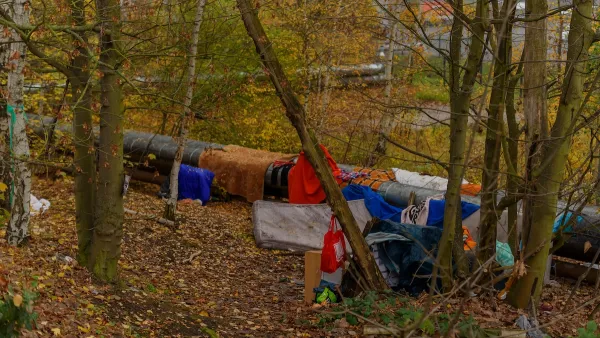Cities have access to tools that can more effectively capture information about unhoused residents and pinpoint what types of resources are needed and where.

The number of people experiencing homelessness is vastly undercounted by the official federal count, writes Tamera Kohler in an opinion piece for Governing — but cities can do better.
Kohler argues that there are existing tools and methods that can help cities more accurately understand the scale of the homelessness crisis. “Better yet, they can allow cities to identify every unhoused person by name, track their personal history with homelessness, and address their specific housing and health needs.”
According to Kohler, “The shortcomings of the point-in-time count are numerous; it simply can't encapsulate the complex and varied forces behind homelessness.” Unhoused people may not be sleeping outdoors every night, and punitive laws can push people to less visible places. In some cases, lack of access to certain properties (for example, San Diego advocates only started counting people on California Department of Transportation property in 2023) can make a major difference in the count. The challenges are often exacerbated in rural areas, where dispersed geography contributes to difficulty in accurately identifying unhoused residents.
Kohler recommends homeless management information systems (HMIS) as one tool for tracking people’s needs and interactions with local services. “An even more powerful way of using HMIS technology is creating by-name data — comprehensive data sets updated in real time that record each person's name, needs, circumstances and history with homelessness. By-name data empowers communities to coordinate personalized care and resources for individuals.”
FULL STORY: We Need Better Data to Combat Homelessness

National Parks Layoffs Will Cause Communities to Lose Billions
Thousands of essential park workers were laid off this week, just before the busy spring break season.

Retro-silient?: America’s First “Eco-burb,” The Woodlands Turns 50
A master-planned community north of Houston offers lessons on green infrastructure and resilient design, but falls short of its founder’s lofty affordability and walkability goals.

Delivering for America Plan Will Downgrade Mail Service in at Least 49.5 Percent of Zip Codes
Republican and Democrat lawmakers criticize the plan for its disproportionate negative impact on rural communities.

Test News Post 1
This is a summary

Test News Headline 46
Test for the image on the front page.

Balancing Bombs and Butterflies: How the National Guard Protects a Rare Species
The National Guard at Fort Indiantown Gap uses GIS technology and land management strategies to balance military training with conservation efforts, ensuring the survival of the rare eastern regal fritillary butterfly.
Urban Design for Planners 1: Software Tools
This six-course series explores essential urban design concepts using open source software and equips planners with the tools they need to participate fully in the urban design process.
Planning for Universal Design
Learn the tools for implementing Universal Design in planning regulations.
EMC Planning Group, Inc.
Planetizen
Planetizen
Mpact (formerly Rail~Volution)
Great Falls Development Authority, Inc.
HUDs Office of Policy Development and Research
NYU Wagner Graduate School of Public Service





























